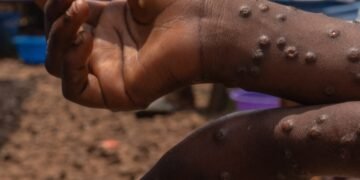Fight against tsetse-related disease hots up
By Mathias Zulu
THE fight against Animal African Trypanosomiasis (AAT) in Mambwe District in Eastern Province has intensified.
Government is waging the war against the deadly disease through its Kakumbi Tsetse and Trypanosomiasis Research Station (KTTRS) under the Tsetse and Trypanosomiasis Control Unit (TTCU) in the Department of Veterinary Services of the Ministry of Fisheries and Livestock.
This is amid concerns of the Animal African Trypanosomiasis prevalence, which if not addressed, will continue to challenge the livestock industry and undermine the nation’s economic stability.
KTTRS has embraced a multi-faceted approach to addressing the threat, emphasising community engagement and scientific research.
Key initiatives include awareness campaigns designed to educate farmers on the causes, symptoms and proper treatment protocols for trypanosomiasis.
These campaigns stress the importance of using trypanocidal drugs correctly and adhering to structured treatment regimens to ensure both efficacy and cost-effectiveness.
District fisheries and livestock coordinator Dr Gloria Mulenga said KTTRS regularly conducted blood sampling and diagnostic surveys to monitor the disease.
The station continued to advocate the responsible use of trypanocidal drugs to ensure consistent treatment practices among farmers.
“KTTRS is not only dedicated to groundbreaking research but also actively implements disease management programmes at both local and national levels,” Dr Mulenga said.
“With advanced parasitology and molecular diagnostic capabilities, our station is the only facility within the Department of Veterinary Services equipped to provide comprehensive testing for trypanosomiasis” she said.
Dr Mulenga said given KTTRS’s strategic location at the interface of wildlife and human settlements, institutions such as the Zambia National Public Health Institute (ZNPHI) and the Food and Agriculture Organization (FAO) were collaborating with government to upgrade the station into a fully-fledged zoonotic diagnostic centre under the One Health initiative.
In support of this transformation, KTTRS recently received new equipment, including a micro haematocrit PCV reader, demonstration and compound microscopes, field tables and chairs, office tables, laboratory stools, a desktop computer set, an autoclave, and a water distiller valued at over US$6,000.
This upgrade will broaden the station’s research scope to include other zoonotic diseases such as rabies and anthrax.
In 2024, FAO facilitated a capacity-building training for 25 officers on AAT diagnosis.
The training aims at improving the knowledge and skills of laboratory and field-based staff to boost the Department of Veterinary Services’ AAT surveillance and survey capacity.
It was delivered in collaboration with the Centre for Veterinary Research Institute (CVRI) – Parasitology section and TTCU.
“The station conducts at least one tsetse survey and two trypanosomiasis surveys each year, depending on available funding. During each survey, we aim to sample at least 100 cattle,” Dr Mulenga said.
She indicated that in 2024, 411 cattle were sampled for trypanosomiasis, with infection rates ranging between eight per cent and 38 per cent.
Also, 1,236 samples collected from around the country were examined for AAT using Polymerase Chain Reaction (PCR), revealing a prevalence of 3.96 per cent (49/1,236).
“Our team also provided capacity-building sessions for field staff from various provinces on survey techniques and laboratory diagnosis. These efforts are essential to understand the disease situation and trypanosome distribution in tsetse flies, which informs decision-making,” Dr Mulenga said.
Dr Mulenga stated the notable dissection of randomly sampled tsetse flies, which revealed an apparent infection rate of 12.5 per cent, with all infections attributed to Trypanosoma congolense – a significant increase from the eight per cent observed in December 2023,” she said. – NAIS

























